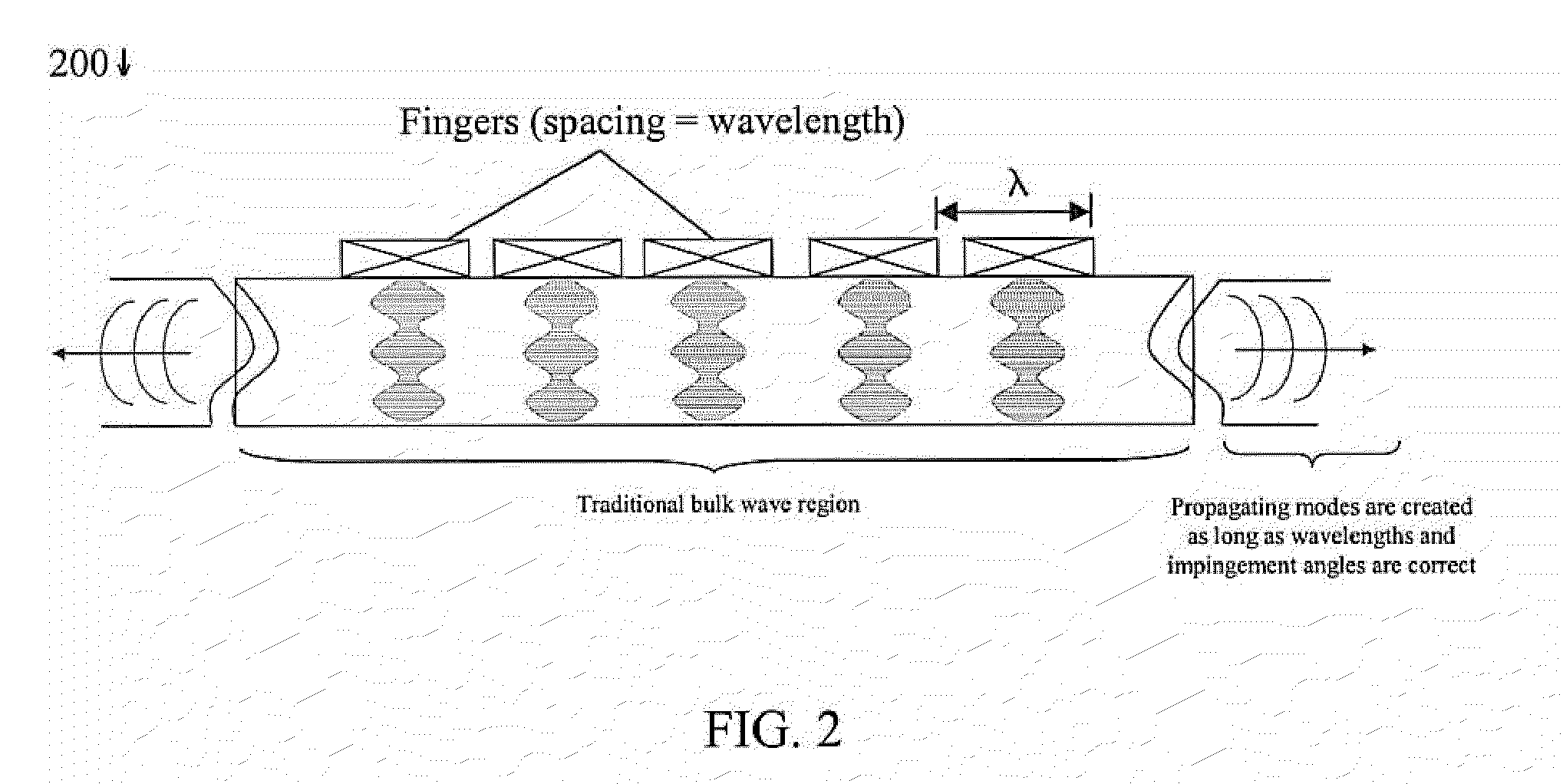Ultrasonic vibration system and method for removing/avoiding unwanted build-up on structures
a vibration system and ultrasonic technology, applied in the direction of generator/motor, transportation and packaging, cleaning using liquids, etc., can solve the problems of reducing handling, component failure, and component performance decline, so as to avoid overheating or improve the overall area of coverage, improve performance, and avoid the effect of overheating
- Summary
- Abstract
- Description
- Claims
- Application Information
AI Technical Summary
Benefits of technology
Problems solved by technology
Method used
Image
Examples
Embodiment Construction
[0028]In one non-limiting method of the invention, a phase velocity dispersion curve space is developed for a structure, in this example called a host structure. The host structure can be an airplane wing, a boat, a structural steel skeleton of a building, or other. The phase velocity dispersion curve space is then evaluated with respect to either a longitudinal wave (“Lamb type wave”) or shear horizontal wave case for the structure such that activation produces a Lamb type wave or shear horizontal wave in the structure by using a specific actuator design. The appropriate point chosen on the velocity dispersion curve space is based on the wave structure across the thickness of the substrate / ice or substrate / contaminant structure. Maximum or reasonable shear stress or normal stress is generated at that point chosen on the velocity dispersion curve space in order to fracture, delaminate, or weaken the interface between ice or materials adhering to the host structure substrate. An angl...
PUM
 Login to View More
Login to View More Abstract
Description
Claims
Application Information
 Login to View More
Login to View More - R&D
- Intellectual Property
- Life Sciences
- Materials
- Tech Scout
- Unparalleled Data Quality
- Higher Quality Content
- 60% Fewer Hallucinations
Browse by: Latest US Patents, China's latest patents, Technical Efficacy Thesaurus, Application Domain, Technology Topic, Popular Technical Reports.
© 2025 PatSnap. All rights reserved.Legal|Privacy policy|Modern Slavery Act Transparency Statement|Sitemap|About US| Contact US: help@patsnap.com



